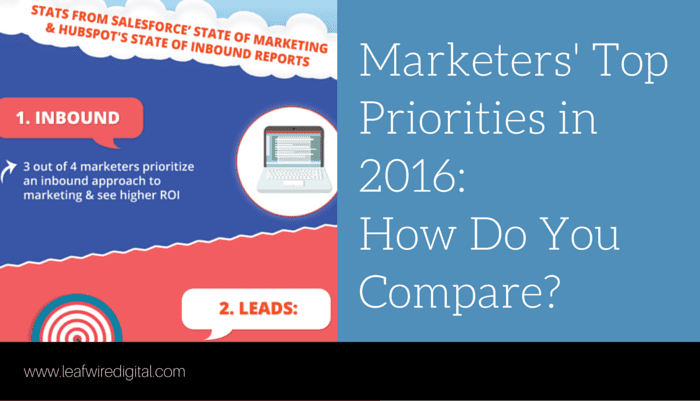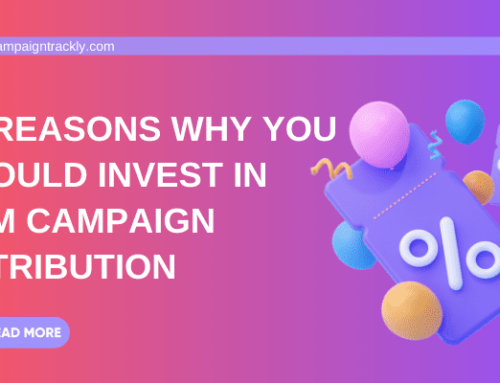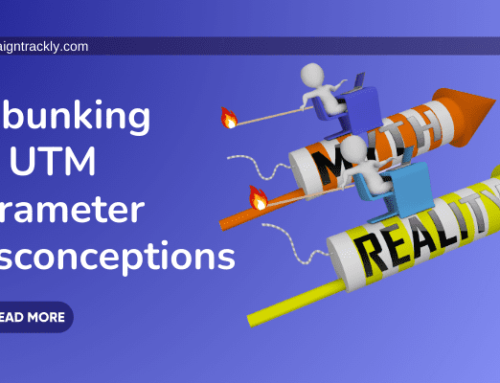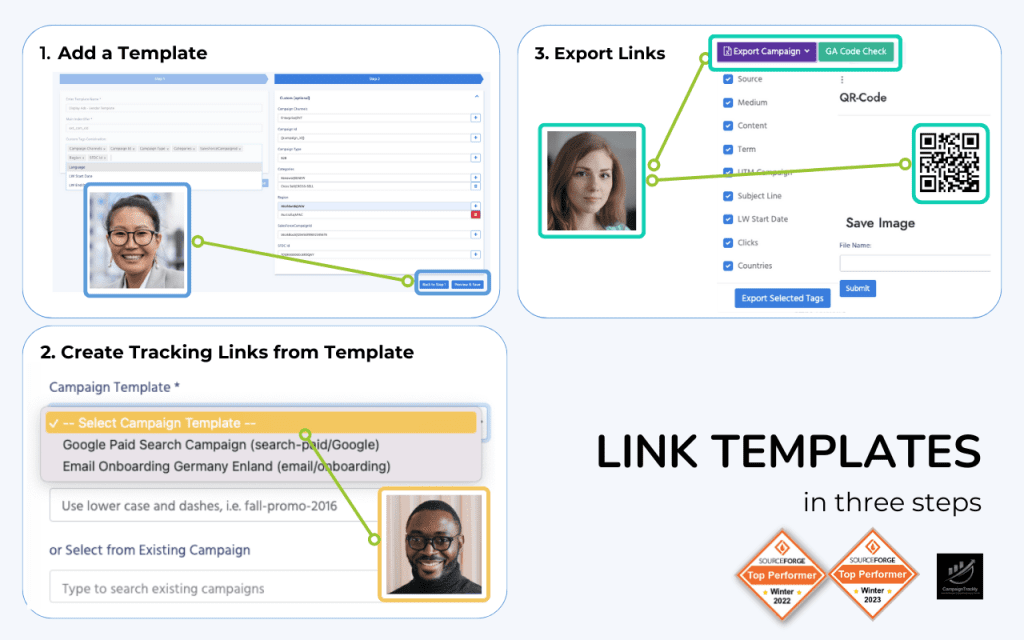This infographic summarizes ten marketing priorities included in the 2016 marketing reports of automation leaders Hubspot and Salesforce. The companion guide to the infographic discusses how you can use these and other key takeaways to transform your digital marketing strategy.
The guide can be found under the image below.

Companion guide: a look at the top takeaways from the recent marketing reports published by Salesforce and Hubspot & how they can help improve your marketing strategy.
As marketers, our main purpose in life is to create awareness, drive demand for our brands, and generate leads. We are under tremendous pressure to deliver cost-effective results and stay competitive.
Why do we care about industry reports? Because they offer:
- in-depth review of the latest developments in the industry. This helps us benchmark industry KPIs against our own state of digital and marketing strategies.
- an analysis of the key factors driving performance within more digitally advanced teams versus marketers that are at the beginning of their digital journey. This information provides essential shortcuts that we can adopt to accelerate adoption of the latest best practices in online marketing to achieve faster results.
The State of Inbound Report by HubSpot
Every year, Hubspot interviews thousands of marketers to understand better their challenges, motivation, success factors, and use of technology. The company’s particular focus is on inbound marketing – the approach where instead of pushing ads, a marketer would engage prospects by offering targeted, useful content.
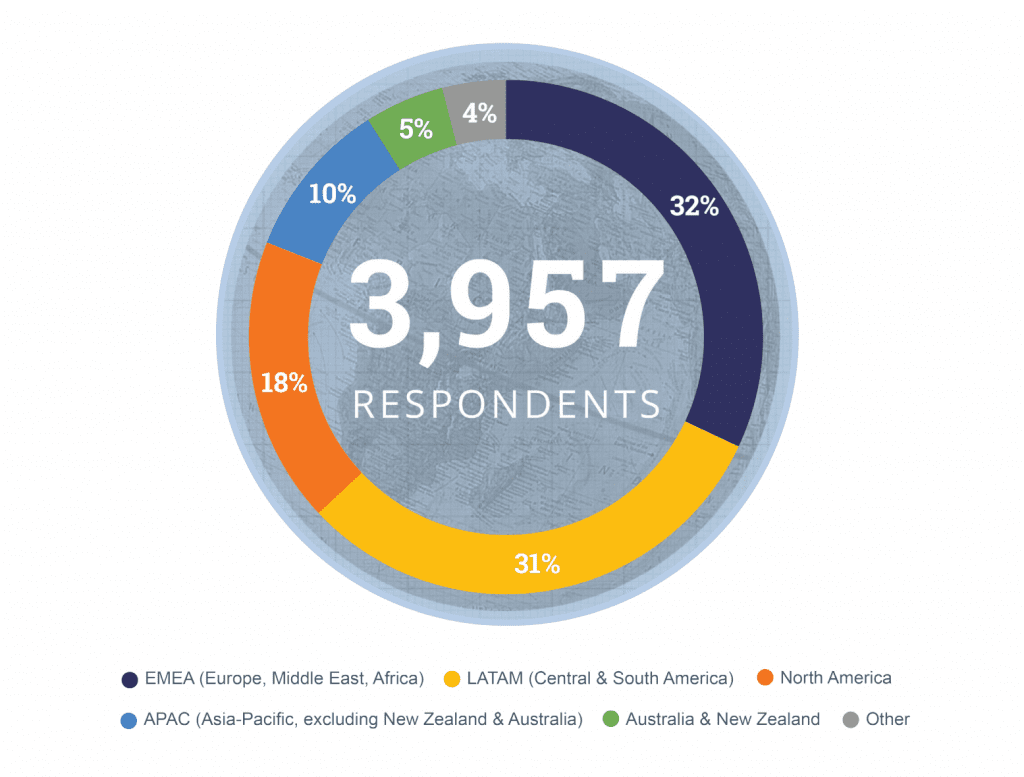
The greatest value of the report comes from the fact that it has been run continuously for 7 years. This enables Hubspot to compare the data through the years and show us how marketing teams have been evolving, as well as adopting more and more advanced digital tools and metrics to meet the changing attitudes and expectations of customers.
For example, this year’s research shows that the Inbound marketing approach is well “entrenched” into most marketing teams across the world, which marks a significant turning point in the growth and maturity of digital marketing.
The report is 73 pages long and has separate sections dedicated to the growth of Inbound, latest trends in marketing and sales, best-in-class practices and more. A link to it is available at the end of the blog.
What are some of its key facts and how to use that to enhance your marketing strategies
- Proven marketing ROI unlocks budget. Best-in-class marketers track ROI, prove it’s growing each year, and secure increased budget as a result.
- Your takeaway: Do we have all the checks and balances in place to track our digital marketing? Are we using UTM tracking for all our inbound email, social, blog and paid links and campaigns to measure KPIs; are we recording in our analytics tool all on-site video views, button clicks, banner performance? Do we keep track of every single campaign that we are running?
- Inbound is the preferred marketing strategy regardless of company type. B2B, B2C, nonprofit and inbound campaigns achieve higher ROI than outbound.
- Your takeaway: Do we know what Inbound is and have we adopted it in our digital marketing strategy? Are we following well-defined funnels for our marketing conversions and how is our content engaging with prospects?
- Marketers who check their analytics metrics 3x week are over 20% more likely to achieve higher ROI.
- Your takeaway: Do we have analytics reports in place? How do we interpret the data and what KPis and actionable ingiths do we leverage to improve our results?
The State of Marketing by SalesForce
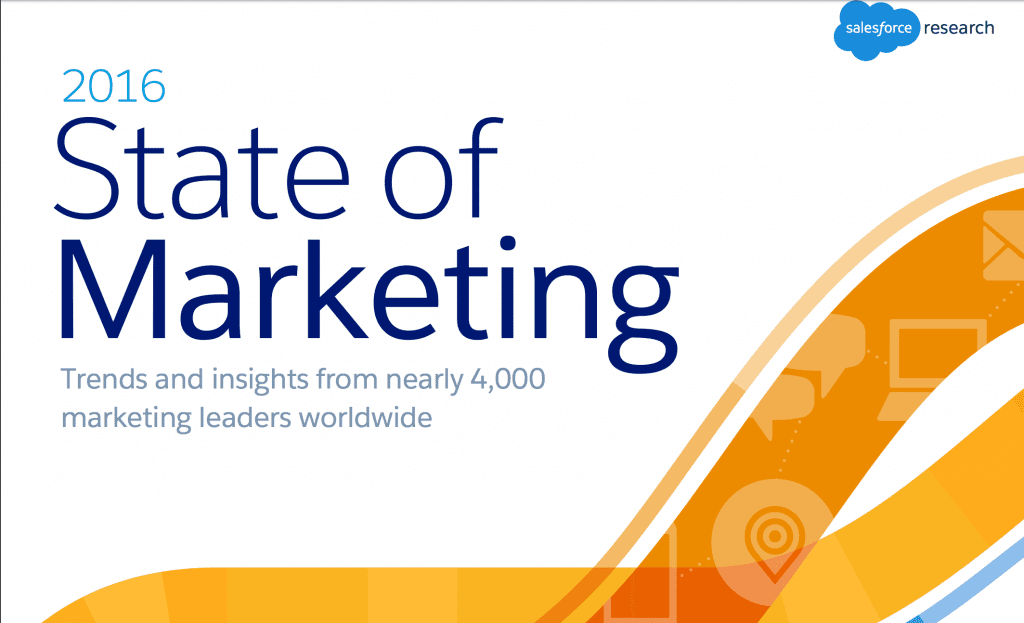
This report shares data collected from 4,000 marketing leaders worldwide. In it, SalesForce focuses on key marketing trends, including analytics & intelligence, as well as the customer journey and personalized experiences.
The biggest value of this report comes from the way it is structured – it has split its respondents into 3 groups – high performers, moderate performers, and under-performers.
This is very enlightening, as it enables us marketers to instantly see which group we fall into, and provides guidance as to what we need to do to improve our digital practices and garner better results. The report is 71 pages long. A link to it is available at the end of the blog.
According to SalesForce, you are a top performer if you and your digital marketing team are focusing on:
- your customer journey as a main driver in your acquisition strategy
- integrating the customer experience across all of the departments that touch the customer
- leveraging smart technologies to become more productive
What are some of its key findings in the report and how to use that to your advantage
- 80% of marketers agree that email is core to their business. Intelligent email is driving higher revenue.
- Your takeaway: Do we have an effective marketing automation tool in place that can give us deeper understanding of behaviors and readiness to buy? How equipped it is to help us personalize emails and use predictive analytics to improve engagement?
- New technology and tools play a significant role in the day-to-day operations of high-performing marketing organizations. Top teams are investing more heavily than others in these areas.
- Your takeaway: Are we among the top adopters of automation tools that would enable us to drive better returns on marketing? If not, what are the 5 key tools we absolutely need to have in order to stay competitive and continue to generate leads effectively?
- With 98% growth in mobile app usage and 111% growth in SMS usage, a majority of marketers are now using these mainstream mobile tactics to engage customers.
- Your takeaway: Do we have a mobile-first strategy for our websites and landing pages? Are we using mobile push notifications and what is our return on that? How many of our web visitors are mobile users and are we meeting their expectations?
A summary of the 10 most important priorities for digital marketers in 2016
Here I have summarized the top 10 takeaways from the two reports. Hopefully, this information will help you ask all the right questions and identify all of the opportunities that can transform your team into a high-performing marketing winner.
- INBOUND: 3 out of 4 marketers prioritize an inbound approach to marketing & see higher ROI
- LEADS: Generating and converting leads continues to be a top priority for most marketers
- ROI: Proving marketing ROI is the #1 challenge for most marketers
- BUDGETS: Budgets are key. Proving marketing ROI is more than twice as likely to drive a bigger budget
- DIGITAL: Marketers are spending more than 70% of their budget on digital marketing in 2016
- SOCIAL: Social channels claim over 65% of the digital marketing spend in 2016
- CUSTOMER JOURNEY: 88% of the top performing marketers say the customer journey is critical to their success
- PREDICTIVE INTELLIGENCE: 79% of the top performing marketers use predictive intelligence to drive results
- MOBILE: Use of SMS is up by 111%. Push notifications are up by 145%
- EMAIL: The number of marketers who use email as a revenue driver has increased by 145% since 2015
You can access the complete reports here:
Now over to you – what do you think? How do you compare?

